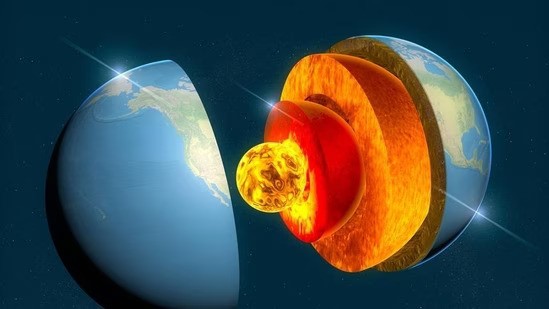Description

Disclaimer: Copyright infringement not intended.
Context
- An international team of experts has discovered the creation of a new enigmatic layer - E prime layer - near the outermost region of Earth's core.
About E-Prime Layer
- A material exchange between the core and mantle was believed to be
- However, the experiments revealed that when water reaches the core-mantle boundary, it reacts with silicon in the core, forming silica.
How did this layer develop?
- This latest research suggests that tectonic plates carrying surface water have transported it deep into the Earth over billions of years.
- Upon reaching the core-mantle boundary about 1,800 miles below the surface, this water initiates significant chemical changes, influencing the core's structure.
- Scientists have observed that subducted water reacts chemically with core materials under high pressure.
- This reaction forms a hydrogen-rich, silicon-depleted layer at the outer core, resembling a film-like structure.
- Silica crystals generated by this process ascend and blend into the mantle, impacting the overall composition.
- These modifications in the liquid metallic layer could potentially result in reduced density and altered seismic characteristics, aligning with anomalies detected by seismologists.

How can this research help in understanding Earth more?
- This discovery enhances researchers' comprehension of Earth's internal mechanisms, indicating a broader and more intricate global water cycle than previously acknowledged.
- The transformed layer in the core holds significant implications for the interconnected geochemical processes linking surface water cycles with the deep metallic core.
|
PRACTICE QUESTION
Examine the significance of the Earth's core in shaping the dynamic processes of our planet. Discuss its composition, behavior, and the role it plays in influencing geological phenomena, magnetic field generation, and the overall structure of the Earth.
|
















